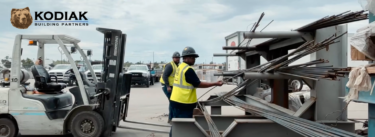It is commonplace in the US Federal Government to see placards and signs admonishing us to be on guard for instances of “Fraud, Waste, and Abuse (FWA).” There are whole offices devoted to the mission of increasing awareness and reporting FWA violations. The phrase “Fraud, Waste, and Abuse” is tossed around the Federal government like a rag doll. Fraud is pretty well understood and is covered in law and regulation. Abuse is covered in a similar way but is captured under ethical standards. Both Fraud and Abuse have penalties for engaging in such behavior, yet Waste is left unattended. Waste, for the most part is in the eye of the beholder. One person’s waste is another person’s necessity, so… who is correct?
Before talking more about Waste, let’s review: What is Fraud? According to the Department of Defense (DoD) Inspector General Hotline Fraud is: Any intentional deception designed to deprive the United States unlawfully of something of value or to secure from the United States for an individual a benefit, privilege, allowance, or consideration to which he or she is not entitled. It is important to recognize that fraud is a trust violation. In the United States, trust is woven in our cultural fabric. Our judicial and jury systems is rooted in trust in that we trust that the person giving testimony is giving the “truth, the whole truth, and nothing but the truth” according to the prescribed swearing in oath. We ask that our military and civilians who work for the Federal Government to make an affirmative trust statement in “…support and defend the Constitution….” Our commerce is based on trust, even in cases where trust can’t be given, we affirmatively announce to the other phrases such as “as-is” or “no warranty of the merchantability” is stated. Trust is so important in the American culture that we impose monetary and prison penalties on lying and perjury.
And let’s review: What is Abuse? According to the DoD Inspector General Hotline Abuse is: The intentional or improper use of Government resources that can include the excessive or improper use of one’s position, in a manner contrary to its rightful or legally intended use. Like Fraud, Abuse is also a trust violation. Abuse is the coopting of one’s position or access for a purpose for which is not intended. People in positions of trust are bound to maintain that trust, affirmatively through the use of non-disclosure agreements (NDA), oaths, etc. and by their expected character. In the Federal Government, specifically the Executive Branch, they following the Standards of Ethical Conduct for Employees of the Executive Branch. Abuses are often captured as ethical violations. A source for examples of ethical violations is the Encyclopedia of Ethical Failure, which is produced annually by DoD’s Office of General Counsel, Standards of Conduct Office. Abuses are captured in areas like power, position, authority, and access.
So Fraud and Abuse are well covered and clearly defined in statute, Executive Order, regulation, and policy. Let’s move on to Waste, where the lean community might come in and be a bit of help perhaps.
What is Waste? According to the DoD Inspector General Hotline Waste is: The extravagant careless, or needless expenditure of Government funds, or the consumption of Government property that results from deficient practices, systems, controls, or decisions.
How do we effectively address Waste? The first action is to understand Waste and where it lives. Waste lives in practices, systems, controls, and decision. Yet we don’t stop here because in each practice, system, control, and decision waste dwells in the processes that comprise each of these! Drilling down we find the root cause of the waste; in finding the root cause we now have something actionable.
In government agencies and so many other organizations, certainly not just government, we see wasteful actions and elements resulting in tangible and intangible outcomes which can be quantified. Consider a deficient practice that results in rework or excess motion or non-productive waiting? Each of these means a waste of time, talent, or treasure.
Some Tools to Address Waste:
- Flow Charting or mapping
- Brainstorming
- Cause and Effect Diagrams (aka Fishbone or Ishikawa)
- 5 Why
These tools will help drill down and practice, system, control, or decision and identify the waste or wastes which need to be addressed. But without a larger understanding of organizational purpose and team purpose (aligned with organizational purpose), none of these tools will help much.
Why is all of this important? In Fraud, Waste, and Abuse programs, Waste is the least understood and perhaps the greatest monetarily. To many people, waste is in the eye of the beholder. The definition used by the DoD IG is a good starting point
So it’s not enough to identify the wastes, it’s important to create effective countermeasures to mitigate waste that naturally occurs without attention to process. If Government is meant to deliver services, and to reduce costs and improve service, it must address waste, all waste. The three Waste Behaviors of Extravagance, Carelessness, and Needlessness are negative behaviors. We know this. Yet I’ve noticed there are no positive Waste behaviors. In other words, behaviors we know help us cut down on waste. All Waste is negative, but if we can accept its constant presence in our midst, we can then begin to see the consequences that Waste has on our time, talent, and treasure. And begin to do something about it.
The discipline of Lean is well suited for the Waste in FWA. It is rooted in throughput (flow) improvement by reducing or eliminating waste. Lean methodology allows for a more structured and disciplined approach to Waste. So as you consider FWA, think of it this way: Fraud has Federal Statutes, Abuse has Standards of Conduct, and Waste has Lean.





